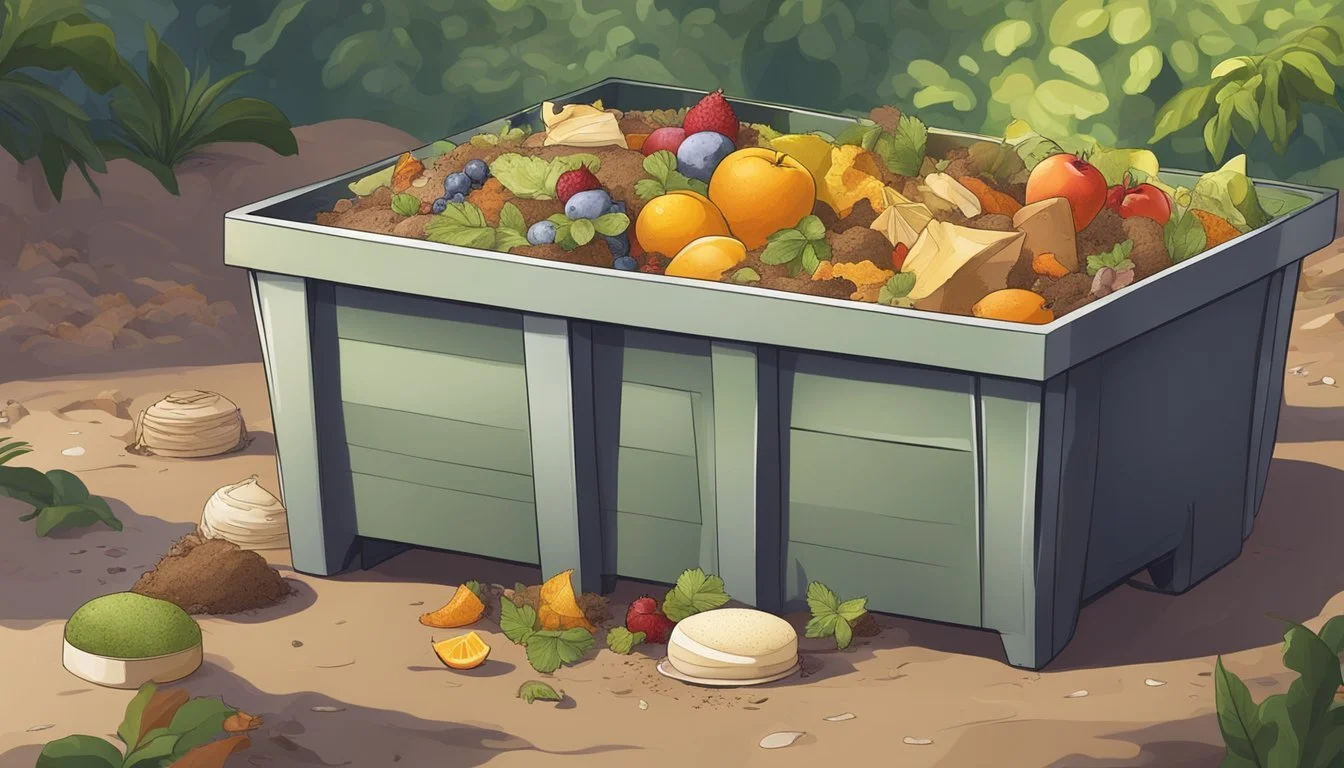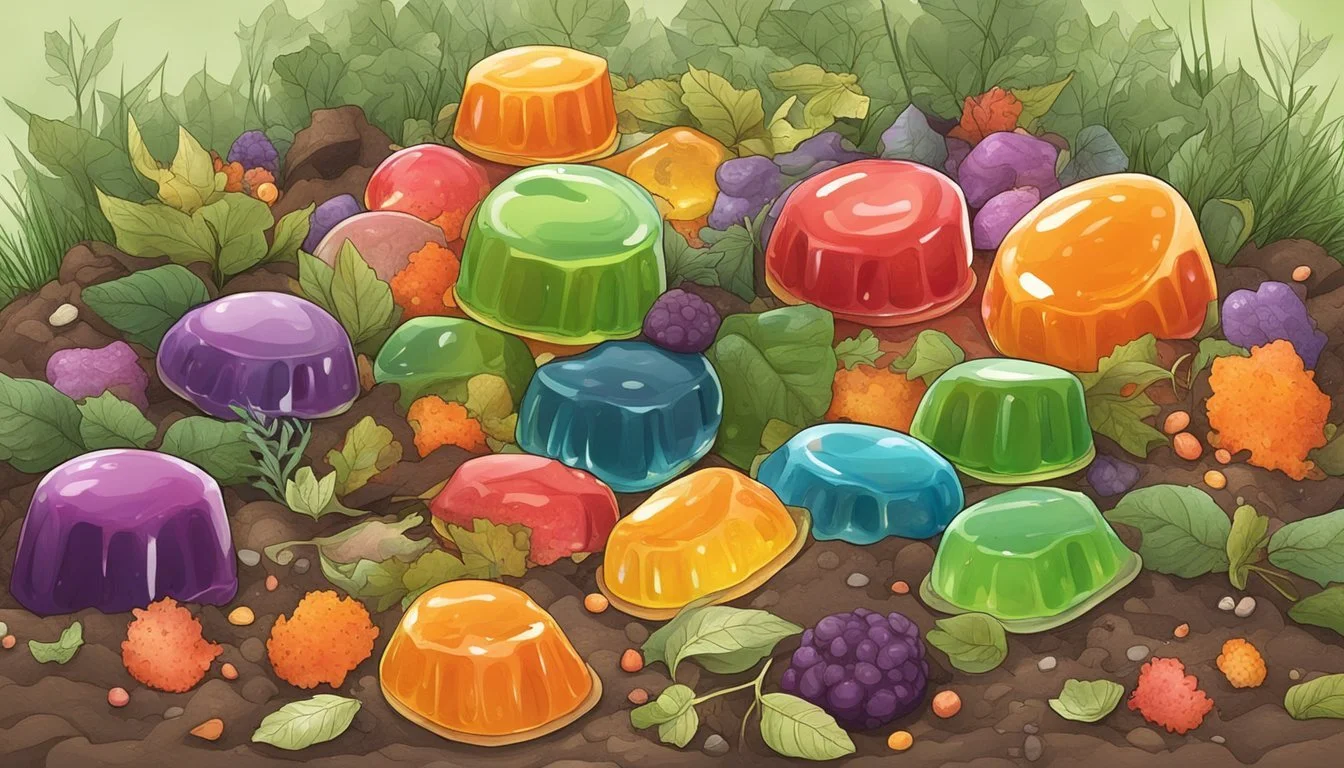Can You Compost Jelly and Jello?
Unveiling the Truth About Dessert Waste Composting
Composting is a sustainable process that turns organic waste into nutrient-rich soil, ideal for gardening and farming. When it comes to composting food items, the suitability can vary greatly. Jelly, often made from fruit preserves with added sugars and sometimes preservatives, can be composted under certain conditions. It is preferable to use homemade or organic jelly, which has fewer additives. These simpler jellies break down more efficiently and are less likely to attract pests than their commercial counterparts.
On the other hand, Jello—a popular gelatin-based dessert—presents different challenges. Unlike jelly, Jello is not recommended for composting. The gelatin in Jello originates from animal by-products and can attract pests, potentially slow down the composting process, and require considerable time to degrade. Furthermore, the environmental impact of its production process raises concerns about the overall sustainability of including Jello in compost bins.
When composting jelly, it is essential to balance it with other compostable materials and ensure proper compost maintenance. This includes regulating moisture levels, turning the compost to enable aeration, and keeping a check on the presence of odors and pests. Composting food items like jelly and Jello can contribute to waste reduction, but care must be taken to do so correctly to reap the environmental benefits.
Composting Basics
Composting transforms waste into valuable fertilizer, contributing positively to the environment by reducing landfill waste and cutting greenhouse gas emissions.
The Composting Process
Composting is the aerobic decomposition of biodegradable organic matter, resulting in compost, a nutrient-rich soil additive. Microorganisms break down plant and some food wastes, requiring adequate oxygen and moisture to thrive.
Components of Compost
The primary components of compost are organic materials sourced from kitchen and garden waste. These include leaves, vegetable scraps, coffee grounds, and eggshells. In the composting context, these materials are categorized as "green" or "brown," each bringing essential elements to the composting process.
Green and Brown Materials
Green materials are rich in nitrogen and include fruit scraps, vegetable peels, and coffee grounds. Brown materials provide carbon, examples being shredded newspaper, straw, and sawdust. A balanced mix of green and brown materials is crucial for effective composting.
Green Materials Brown Materials Vegetable scraps Shredded newspaper Fruit waste Dry leaves Coffee grounds Straw Grass clippings Sawdust
Benefits of Composting
Composting converts waste into a nutrient-rich soil amendment, helping plants grow healthier and reducing the need for chemical fertilizers. This process also helps mitigate climate change by sequestering carbon and reducing methane emission from landfills.
Composting Methods
Several composting methods exist, from simple compost bins to sophisticated worm farms (vermicomposting) and Bokashi fermentation. These methods can vary in sophistication and suitability, depending on the user's needs and space constraints.
Composting Challenges
Composting challenges include managing pests and rodents, controlling odors, and avoiding the proliferation of disease-causing organisms or harmful pathogens. Adequate maintenance and monitoring of moisture, oxygen levels, and temperature are required to mitigate these challenges.
Jelly and Jello in Compost
Understanding the suitability of jelly and jello for composting requires examining their ingredients and the impact they have on the composting process, balancing both the benefits and potential challenges.
Can You Compost Jelly and Jello?
Yes, jelly and jello can be added to compost; however, there are specific conditions to be met for effective decomposition. Jelly, made predominantly from fruit, sugar, pectin (how long does pectin last?), and sometimes preservatives, can enhance compost if used sparingly. Jello, comprising water, sugar, gelatin, artificial flavors, and colors, presents similar considerations.
What is Jelly and Jello Made Of?
Jelly is made from fruit juice, sugar, and pectin, a naturally occurring substance in fruits. Jello, on the other hand, includes water, sugar, gelatin (a protein derived from animal collagen), and artificial additives for flavor and color.
Considerations for Composting Jelly and Jello
When composting these foods, consider their high sugar content. Excessive sugar can attract rodents and pests and disrupt the compost's microbial balance. Jelly may contain preservatives that slow down the decomposition process.
Pros and Cons of Composting Jelly and Jello
Pros:
Reduces food waste going to landfills.
Adds easily consumable energy for microorganisms in the compost.
Cons:
High sugar content attracts pests.
Artificial substances may hinder decomposition and contaminate compost.
How to Compost Jelly and Jello Properly
To compost jelly and jello:
Mix small amounts with a larger ratio of “browns” like leaves, straw, or sawdust.
Ensure adequate moisture and aeration to accelerate breakdown.
Homemade versions, with fewer additives, are preferred.
Common Mistakes to Avoid
Avoid adding large quantities at once; this can overload the compost with sugar. Keep the balance of compost materials by not letting any one ingredient, like jelly or jello, dominate. Prevent contamination by being mindful of the chemical content of the products.
Related Food Waste
Managing food waste efficiently is a crucial aspect of composting. Certain foods and related waste are excellent for compost, while others may be unsuitable. Understanding which items contribute to a nutrient-rich compost and which may attract pests or introduce pathogens is essential.
Composting Fruits and Vegetables
Fruits and vegetables are the cornerstone of any healthy compost pile. They break down quickly and provide essential nutrients:
Fruit waste: Includes apple cores, banana peels, and citrus rinds. These are rich in nitrogen and add acidity beneficial for the microbial activity in compost.
Vegetable waste: Comprises peels, trimmings, and other parts of vegetables not consumed. Carrot tops, potato peels, and celery ends are prime examples.
Composting Cooked Foods
While raw fruits and vegetables compost well, cooked foods require more caution:
Rice and pasta: Should be added in small quantities as they can clump and create anaerobic pockets within the compost.
Other cooked scraps: Including small amounts of plain cooked food is permissible, but one should avoid anything with oils, dressings, or dairy products.
Other Sweets and Confections
The composting of sweets and confections, unlike simple fruit and vegetable matter, comes with caveats:
Ice cream: Not recommended due to its dairy content and additives.
Candy and gummies: High sugar content can attract pests. Gelatin-based candies, like gummies, should also be avoided.
Paper and Cardboard Products
In addition to food waste, certain paper products may be composted with consideration to reduce landfill contribution:
Napkins and paper towels: Ideally, those that haven't been used with chemicals or greasy substances.
Coffee filters: Can be composted along with the coffee grounds they contain.
Wood ashes: Sparingly added, as they change the pH and can benefit compost in moderation.
Enhancing Your Compost
A healthy compost requires a balance of materials that provide nitrogen and carbon, proper moisture levels, and ongoing maintenance for best results. Introducing substances like jelly and jello should be done cautiously to avoid disrupting the compost's ecosystem.
Balancing Compost Ingredients
A well-balanced compost pile requires the right mix of browns (carbon-rich materials) and greens (nitrogen-rich materials). Browns might include dry leaves, paper, or wood chips, while greens are typically food scraps, grass clippings, and similar items. The ideal ratio is about 3 parts browns to 1 part greens. This balance provides the energy and nutrients that microorganisms and bacteria need to break down the organic matter.
Browns (Carbon-Rich):
Dry leaves
Cardboard
Straw
Greens (Nitrogen-Rich):
Fruit and vegetable scraps
Grass clippings
Coffee grounds
Using Compost in Your Garden
Compost enriches garden soil with essential nutrients, creating a nutrient-rich soil. It should be mixed into the soil at the beginning of a planting season to improve soil texture and promote healthy plant growth. Compost also ensures that the soil maintains an optimal moisture level, which benefits plant roots and improves the overall health of the garden.
Compost Maintenance and Care
Maintaining your compost involves regular turning to distribute oxygen and moisture evenly, both critical for decomposing organics successfully. The pile should be moist but not wet, with occasional watering in dry conditions. Keeping a compost temperature between 140-160°F (60-71°C) accelerates decomposition and promotes a thriving environment for microorganisms.
Do:
Turn the pile regularly
Maintain appropriate moisture
Monitor the temperature
Don't:
Overwater
Let the pile dry out
Troubleshooting Common Compost Problems
Common issues with compost include unwanted odors, pests, mold, or slow decomposition. Odors and methane production can be a sign of anaerobic conditions due to overwatering or insufficient oxygen. Adding more browns can absorb excess moisture and restore balance. If the pile is decomposing slowly, it might need more greens to increase nitrogen content. Persistent problems may require restarting the compost pile with a fresh balance of ingredients.






